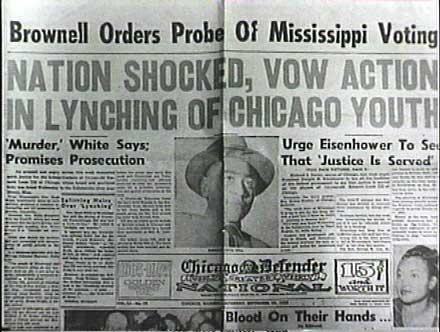by DAN WAKEFIELD
I am still here, and I now see headlines comparing the murder of George Floyd in Minneapolis to that of Emmett Till in Mississippi in 1955.
Emmett Till, a fourteen-year-old black boy from Chicago who had gone to the Mississippi Delta to visit his grandfather, accused of the crime of whistling at a white woman, was found at the bottom of the Tallahatchie River [shot through the head] and with a seventy-pound cotton gin fan tied around his neck with barbed wire.
George Floyd, a 46 year-old man rumored to have passed a counterfeit twenty-dollar bill at a convenience store was found beneath the knee of a policeman who stared unblinking at a photographic lens as he pressed the life out of a man’s neck.
In both cases, when worldwide attention was brought to the crime – the  journalists from around the country who crowded the stifling Mississippi courthouse, and the protestors who filled the streets of cities throughout the U.S. and the world last week – “outside agitators” were blamed. In Mississippi, the defense attorney suggested the ring found on Emmett Till’s body that identified him was planted there by the agents of some sinister group that was trying to destroy the social order of the South and “widen the gap between the white and the colored people of the United States.”
journalists from around the country who crowded the stifling Mississippi courthouse, and the protestors who filled the streets of cities throughout the U.S. and the world last week – “outside agitators” were blamed. In Mississippi, the defense attorney suggested the ring found on Emmett Till’s body that identified him was planted there by the agents of some sinister group that was trying to destroy the social order of the South and “widen the gap between the white and the colored people of the United States.”
No group needed to be named, since the local rumor was that the whole Till affair was a plot of the NAACP. I was not surprised when Trump blamed Antifa for the protests, but my favorite response was the United States Senator Tina Smith from Minnesota suggesting that “anarchists” were behind the rioting. Have Emma Goldman and Alexander Berkman returned to haunt the streets of America?
The defense attorney in the Till case told the jurors in his summation that he had faith that “every last Anglo Saxon one of you men in this jury has the courage to set these men free.” For many years I thought that the term, “Anglo-Saxon” would never be used again as a rallying cry in American politics – until Trump came along.
What we are now being made to finally face is the fact that slavery is our national legacy, embedded in our way of life. In my report on the Till trial sixty-five years ago in The Nation I wrote that the Delta town of Sumner, Mississippi, where the trial was held, was “based on cotton and the proposition that a whole race of men was created to pick it.”
It is not just the South and it is no longer cotton; the American dream is based on the nightmare of racial suppression. The pandemic provides a rough map of who is free.

 This work is licensed under a Creative Commons Attribution-NonCommercial 4.0 International License
This work is licensed under a Creative Commons Attribution-NonCommercial 4.0 International License
ALL CAPTIONS AND PULL QUOTES BY THE EDITORS NOT THE AUTHORS






